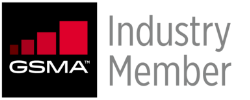Having workers who are unfit for work can lead to serious health and legal risks for you as an employer, leading to fines and lawsuits. Don’t let this happen to you.

Who We Are
We are a people and a software development company.
What We Do
Most organizations want to easily acquire and service a lot of customers digitally but struggle with complex processes. We help by seamlessly automating these processes so that they can be more productive, make customers happy and boost revenues.
Company
Subscribe
Get updates on our products, services and the industry
UK Office
Arena Business Centre, 100 Berkshire Place, Wharfedale Road, Winnersh, RG41 5RD
Phone
+44 1274 003915
Lagos Office
1st Floor, Leasing House,C & I Leasing Drive, Off Bisola Durosinmi Etti Drive, Off Admiralty Way,
Lekki Phase 1, Lagos, Nigeria
Phone
+234-1-342-9192
